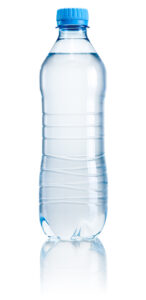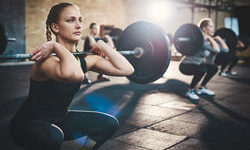Exercising in the heat
The dark, cold nights during the winter are never conducive to getting out of the house and into the gym but, while warm summer days and evenings might seem like the perfect time to get active, we must always be aware that exercising in the heat has to be approached with caution.
Heat and humidity
The first thing to be aware of when exercising in the heat is an increase in the temperatures and humidity. As we get warmer and warmer, so sweat is released to help the body cool itself. This regulates the body’s temperature but also leads to a loss in fluids. Heat exhaustion and heat stroke are two dangerous effects of overdoing summer exercise and they are brought on when the body can no longer sustain the pace, the heat, the humidity and the loss of fluid.
Water, water water!

Keeping hydrated is vitally important at this time. As long as you remain hydrated, the body has enough fluid to cool itself by sweating. It is when you are dehydrated that the problems start. As your body heats up, your internal organs and central nervous system are put under more pressure. Signs of heat exhaustion include general fatigue, weakness, nausea, dizziness, muscle cramps, and an increase in body temperature,
At the critical end of the scale, an inability to sweat, acute respiratory distress, and loss of consciousness can be signs of heat stroke, which is much more severe and can lead to death.
However drastic this all sounds, there are some simple things you can do to make sure that when you are exercising in the heat your workout is safe and effective.
No 1: Acclimate yourself
It can take 14 days to get accustomed to exercising in the heat, so if you have a race or an event in the summer, make sure you are prepared for it. If your event is taking place in the middle of the day, make sure you have been gradually increasing the training intensity at this time in the weeks leading up to the event. But remember, if you are just doing routine exercise, it is better to exercise outside when it is cooler, such as the early morning or evening.
No 2: Stay hydrated
If you finish a workout in the heat and find yourself a few pounds lighter, then you must work hard to rehydrate. You lose two and a half cups of water for every pound of body weight lost. This needs replacing to avoid suffering the effects of dehydration. You can also do a urine test – if your urine is pale in colour, you are hydrated, darker in colour and you are dehydrated. To stay hydrated, drink plenty of water before, during and after exercise.
No 3: Slow down
When the temperatures are high, don’t expect to set personal bests. When it is hot and humid, your body will be working hard to regulate, so you cannot expect it to also be performing at its optimum. If you suffer in the heat when exercising, choose an activity programme that gets your heart working in its middle, fat burning zone, rather than in the higher effort levels of cardio burn.
No 4: Exercise in the morning or evening
Unless you are training for a midday event, try to get out and exercise in the morning or evening when the temperatures are lower. The gym, with its air conditioning, is the perfect place to exercise if you cannot make that morning or evening run. The constant temperature of the gym environment means you can exercise at your usual intensity. Just be aware, if you walk or cycle home, that your temperature will rise once you step outside.
And remember, while you might find the heat a little exhausting, all too soon it will be cold, wet and dark again!!!!







